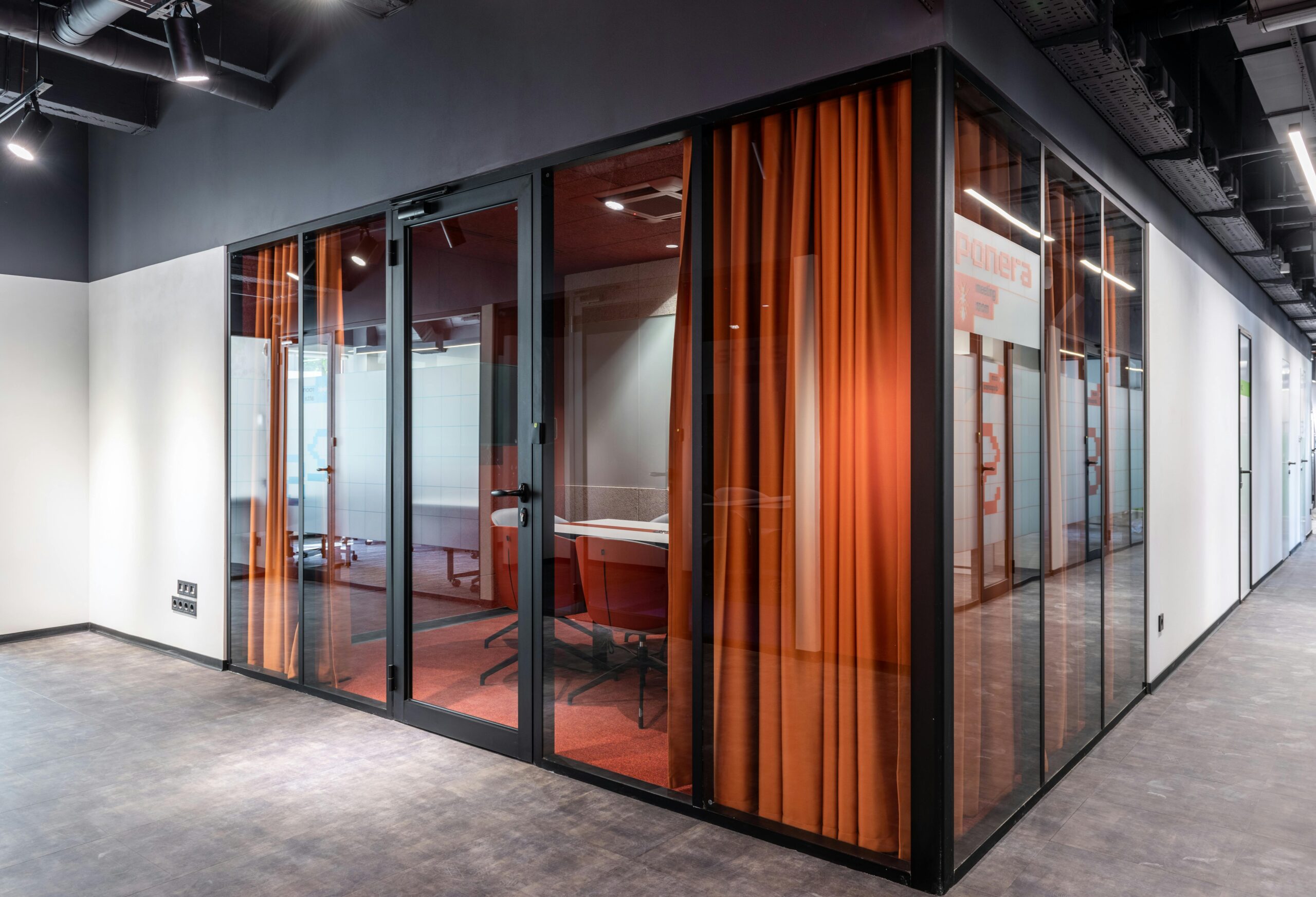Glass has become a fundamental element in modern office design, offering both aesthetic beauty and functional benefits. The use of glass partitioning is particularly prevalent, as it introduces a sense of openness while maintaining distinct work areas. This post delves into how glass influences office aesthetics and functionality, and why it has become a staple in contemporary workspace design.
Enhancing Spatial Perception with Glass
Glass partitions play a crucial role in transforming traditional office environments into modern workspaces. They provide a visual continuity that can make even the smallest office appear more spacious. By allowing natural light to permeate through the office, glass partitions create a bright and airy atmosphere, reducing the reliance on artificial lighting and promoting a more energetic work environment.
Beyond just the illusion of space, glass also adds a sleek, clean aesthetic to any office. It reflects the office’s lighting and views, enhancing the overall visual appeal of the space. This can be especially beneficial in creating a positive first impression for visitors and potential clients.
Balancing Privacy and Collaboration
While open-plan offices are popular for fostering collaboration, they can sometimes reduce privacy, which is crucial for concentration and confidential tasks. Glass partitions provide an excellent solution to this dilemma. They maintain the feel of an open, interconnected space while also offering soundproofing qualities to reduce noise distractions.
The adaptability of glass also means that it can be customised to suit various privacy needs. For example, frosted or tinted glass can be used where more privacy is needed without sacrificing the flow of natural light. This flexibility makes glass an ideal choice for meeting rooms, managerial offices, and areas where confidential work takes place.
Sustainability and Maintenance
Incorporating glass into office design also aligns with sustainability goals. Glass is a sustainable material that can be recycled indefinitely without loss of quality. Its ability to enhance natural light reduces energy consumption, which not only lowers utility costs but also decreases the carbon footprint of the office.
Furthermore, glass is easy to clean and maintain, requiring less frequent replacements compared to other materials like wood or plaster. Its durability and ease of maintenance ensure that offices retain their polished look with minimal effort, making glass an economically smart choice over the long term.
The Role of Glass in Branding and Corporate Identity
Glass is not just practical; it’s also a powerful branding tool. Customised glass installations can include etching of company logos, use of brand colours, or even digital prints that reinforce brand identity within the workspace. This customisation can transform glass partitions from mere functional elements to key components of a company’s branding strategy.
The transparency of glass also symbolises modern business values such as openness, transparency, and innovation. Using glass prominently within an office can therefore help communicate these values to both employees and visitors, aligning the physical workspace with the company’s cultural ethos.
Glass has undeniably reshaped office design, marrying aesthetics with efficiency in a way that few other materials can. Its versatility and visual appeal enhance not only the look of an office but also its operational dynamics, making it a wise choice for any business looking to create a modern, functional, and inspiring workspace.
